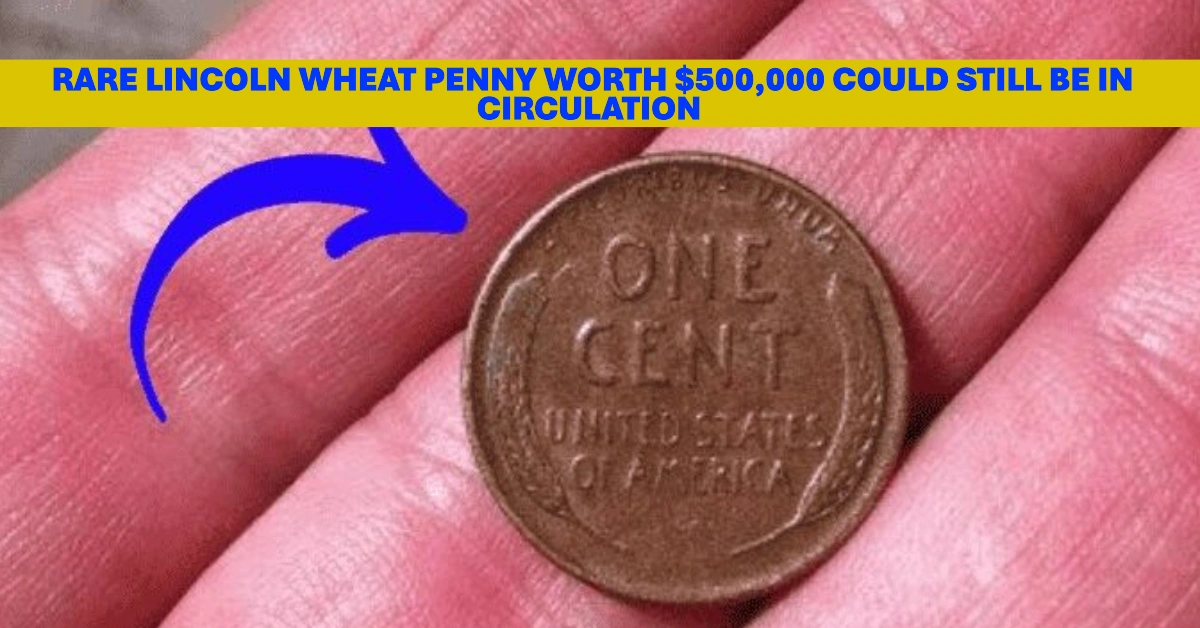The Lincoln Wheat Penny, introduced in 1909, is one of the most iconic coins in American history. While millions of these pennies were minted and circulated across the United States, a select few have become legendary for their rarity—and staggering value. Some Lincoln Wheat Pennies have sold for up to $500,000, and believe it or not, a few are still out there in everyday circulation.
In this article, we’ll uncover the secrets behind these valuable coins, explore their historical roots, and teach you how to identify a potential treasure in your pocket change.
Table of Contents
The Origin and Legacy of the Lincoln Wheat Penny
Designed to Honor a President
First struck in 1909 to commemorate the 100th anniversary of Abraham Lincoln’s birth, the Lincoln Wheat Penny was the first U.S. coin to feature a real historical figure. The design, created by artist Victor David Brenner, displayed Lincoln’s profile on the obverse (front) and two stalks of wheat on the reverse—symbolizing America’s agricultural heritage.
Production Timeline
The Wheat design remained in use from 1909 to 1958, when it was replaced by the Lincoln Memorial reverse. Over those decades, billions of coins were produced, but only a few rare examples stand out due to low mintage numbers, minting errors, or unique characteristics.
What Makes Some Lincoln Wheat Pennies Worth $500,000?
Rarity and Error Drive Value
The Lincoln Wheat Penny’s value hinges on factors like mint location, production quantity, and minting mistakes. These rare combinations are what make some coins highly desirable to collectors.
Here are three of the most valuable Lincoln Wheat Pennies:
1909-S VDB
This coin is perhaps the most famous among collectors. Minted in San Francisco and marked with the initials “VDB” for designer Victor David Brenner, it had a very limited production run before controversy over the initials led to their removal. In pristine condition, this penny has sold for up to $500,000.
1914-D
Minted in Denver, the 1914-D Wheat Penny is rare due to both limited production and quality issues. Fewer high-grade specimens have survived, making it another valuable find for collectors. In top condition, it can be worth hundreds of thousands of dollars.
1943 Copper Penny
During World War II, the U.S. Mint used steel coated with zinc to preserve copper for the war effort. However, a few 1943 pennies were mistakenly struck on copper planchets. These extremely rare errors are among the most coveted U.S. coins, with values reaching $500,000 or more at auction.
How to Identify a Valuable Lincoln Wheat Penny
Step 1: Check the Year and Mintmark
Look closely at the year of the coin and its mintmark (usually found below the date). Coins minted in San Francisco (S) and Denver (D) tend to be rarer in certain years. Combine a rare year with a low mintage mint, and you might be holding a small fortune.
Step 2: Examine the Coin’s Condition
Condition is everything in coin collecting. Coins in mint or near-mint condition—sharp details, no scratches, minimal discoloration—fetch far higher prices than worn-out examples. Use a magnifying glass to inspect details like Lincoln’s hair, the wheat stalks, and the edges of the coin.
Step 3: Look for Minting Errors
Errors can turn a regular penny into a six-figure jackpot. Common valuable errors include:
- Double dies (duplicate images or text)
- Off-center strikes
- Wrong metal planchets
If your coin shows signs of these anomalies, it’s worth having it professionally evaluated.
Rare Lincoln Wheat Penny Worth $300,000 May Still Be in Circulation
Rare Lincoln Wheat Penny Worth $200,000 May Still Be in Circulation
Are Rare Lincoln Wheat Pennies Still in Circulation?
Yes—But You Have to Look Closely
While most valuable Lincoln Wheat Pennies have already been snapped up by collectors, some are still being found in everyday circulation. People occasionally discover rare pennies in:
- Coin rolls from banks
- Estate sales or antique shops
- Old piggy banks and change jars
Checking your pocket change might seem trivial, but it’s still possible to find one of these rare treasures hiding in plain sight.
Where to Get Your Coin Appraised
If you think you’ve found a valuable Lincoln Wheat Penny, your next step should be verification. Consider:
- Local coin dealers for initial assessments
- Professional grading services like PCGS or NGC
- Online coin collector forums for insights and comparisons
Getting your coin graded professionally ensures its authenticity and determines its market value.
Final Thoughts: A Penny for Your Fortune
Most Lincoln Wheat Pennies are worth just one cent, but a lucky few are valued at hundreds of thousands of dollars. These rare coins—whether due to their age, production errors, or historical significance—represent a unique blend of art, history, and potential profit.
So next time you get change from a store, don’t be too quick to spend it. That old penny in your pocket just might be worth $500,000.
